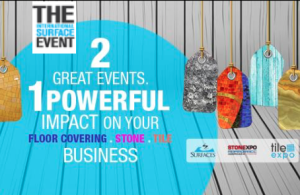As featured in Floor Covering News

I will start this article off with a funny story:
A customer called our stone restoration company complaining about a dark stain on her white marble floor. When customers complain about dark stains, I usually assume oil or grease, but instead of me jumping in, I asked her to elaborate. She said the dark stain was right next to her bedroom door, but was not always visible. She could only see the stain at certain times of the day. I then asked her the shape of the stain. She walked to her bedroom and looked; she replied that the stain was round. I thought about it for a moment and then asked her to move the bedroom door and let me know if the stain disappeared. Sure enough it did! Well, the stain was not a stain at all; it was the shadow from the bedroom doorknob!
Had I not taken the time to listen to her description of the problem, I would have just assumed it was a grease stain. I would have made an appointment to go see her marble floor, but as it turns out, she didn’t need our services at all. The couple of minutes I spent with her on the phone ended up saving me a trip.
Our interaction with potential customers usually begins with a phone call. This initial conversation is your chance to gather key information that will start your relationship off on the right foot.
First, find out what the customer needs. It sounds pretty basic, but it is very important. It has always served me better when I allow potential customers to explain to me in their own words what they are looking for and what problems they would like to fix.
I ask questions that help me figure out how big the project is, where the customer is located, and if necessary, I ask more questions about the issue the customer initially called about. Doing so allows me to decide: first of all, if our company can even resolve his or her issue. If the project sounds like something we can take care of, I try to gauge the cost of the job before I even set eyes on the stone surface.
Having this short, preliminary conversation saves me time, as well as the customer’s time. It also gives me insight into the customer’s personality. (Is he/she straight-and-to-the-point or more talkative?)
Also, let’s not forget that at the end of the day, we are all in sales – in one way or another. I always try to come across honest and knowledgeable of our services and products. I certainly do not want to inflate or over-promise our services. I also like to give potential customers a little information about our stone restoration processes, without getting too technical. I try to use terms that are easy to understand, for example, instead of “compound polishing” I would say “powder polishing” or “wet sanding.” That way, we are all on the same page.
Whatever industry you are in, I think we can all agree that we would like to: 1. Save time and 2. Improve customer service. With a three-minute preliminary conversation, you can achieve both goals.
To learn more, I will be presenting with my father, Rawi Tabbah at TISE 2016, “Three Minute Diagnostics – Diagnose that Stone Restoration Problem in Just Three Minutes!”

